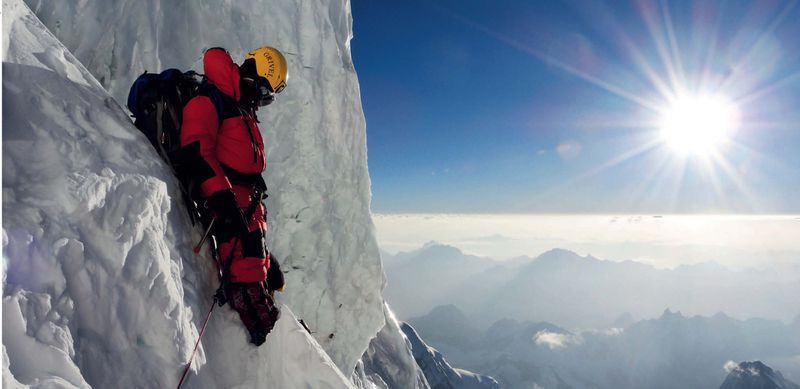K2 is a mountain that embodies the supreme level of human failure.
ON THE AFTERNOON after my tour of the dead, I clambered up to the Gilkey Memorial, a pile of ocher rock now festooned with dozens of plates and saucepan lids inscribed with eulogies to all the men and women who have died here. Below, I could see a procession of Pakistani guides bearing the bodies of six Japanese climbers who had been killed by an avalanche in 1997. Like Dudley Wolfe, they had recently emerged from the glacier. The guides stacked the corpses, wrapped them in plastic, then piled ice on top to keep them cool until a funeral pyre could be assembled from wood they had carried to base camp. As the wind kicked up, the plates and lids began rattling against the stone, beating out a mournful, otherworldly cadence.
At that moment, K2 seemed little more than an abattoir - a place linked inextricably with death. It was only months later, after I had returned home and met Charlie Houston for the first time, that it occurred to me that K2 might also embrace another quality - a dimension of redemptive grace that extends beyond the sport of mountaineering.
"That's why I don't accept people who call us heroes. What else were we to do?"
Houston's unsentimental attitude is admirable, but it fails to do justice to the fact that he and his men did, in fact, have a choice: They could have abandoned Gilkey to a fate that was almost certainly inevitable. Their selflessness in refusing even to consider such a thing may not qualify as heroism in their eyes, but to some it defines them in terms that cannot be other than heroic.
"The year after Charlie and his team came home," says Jim Curran, the K2 historian, "the Italians finally succeeded in reaching the top - but it is Houston's expedition that remains the touchstone of all that is best in mountaineering. Unfortunately, the world has since slid past this ideal. Events in climbing today are totally silly, particularly on Everest. But what those men did on K2 in 1953 was incredible. It is now one of the great legends of the mountains. In the annals of Himalayan climbing, there is nothing finer than this."
What that legend suggests is that K2 may well be greater than Everest. Not because it's technically harder or imparts more lyrical visions to those who climb it, but because, through the actions of Houston and his men, K2's signature narrative achieved an expression weightier than mere triumph. "I have great respect for the Italians who summited K2 for the first time in 1954," says Reinhold Messner, "but even greater respect for the Americans and the way they failed in 1953. They were decent. They were strong. And they failed in the most beautiful way you can imagine. This is inspiration for a lifetime."
If Everest is a mountain that supposedly personifies the highest level of human achievement - achievement that each year is cheapened by ever less meaningful distinctions - then K2 is a mountain that embodies the supreme level of human failure. Failure imbibed to the fullest measure. Failure that cuts to the bone. And failure, too, that through some paradoxical alchemy transcends carnage by transforming those who possess the resilience and the honor to weather the ordeal. This is the secret to K2.

